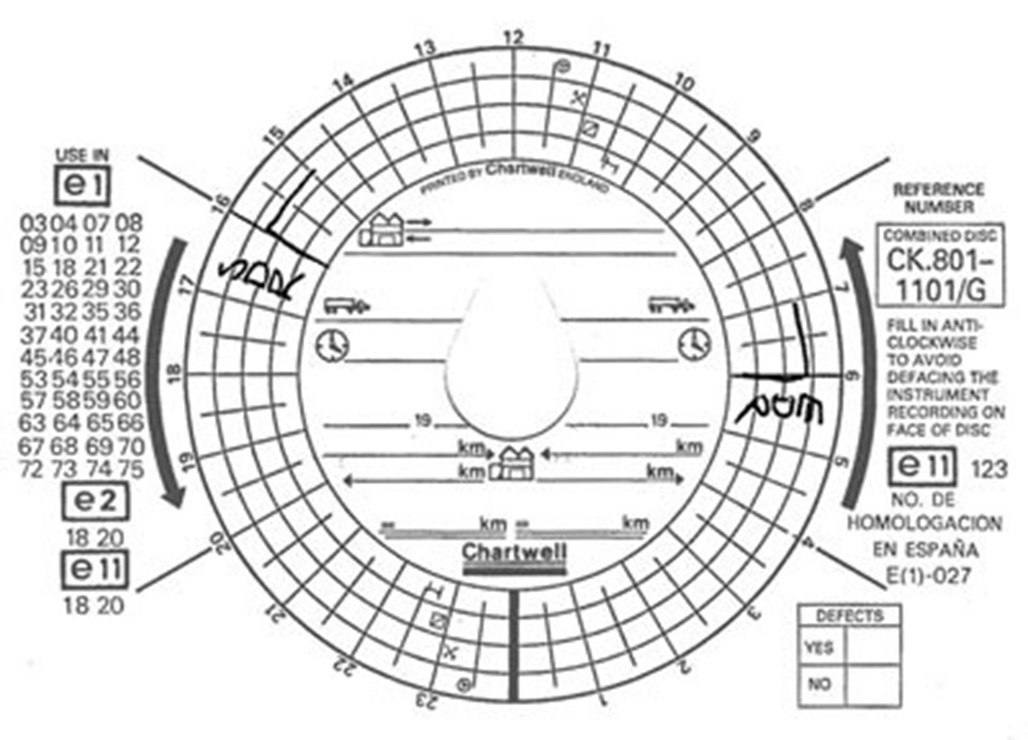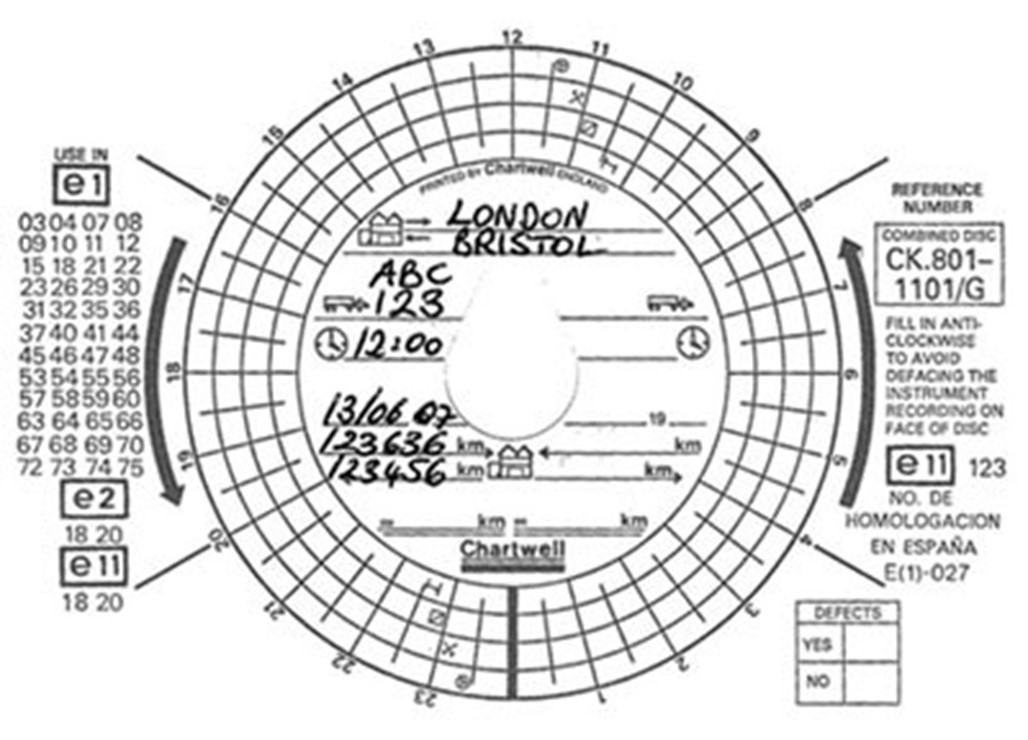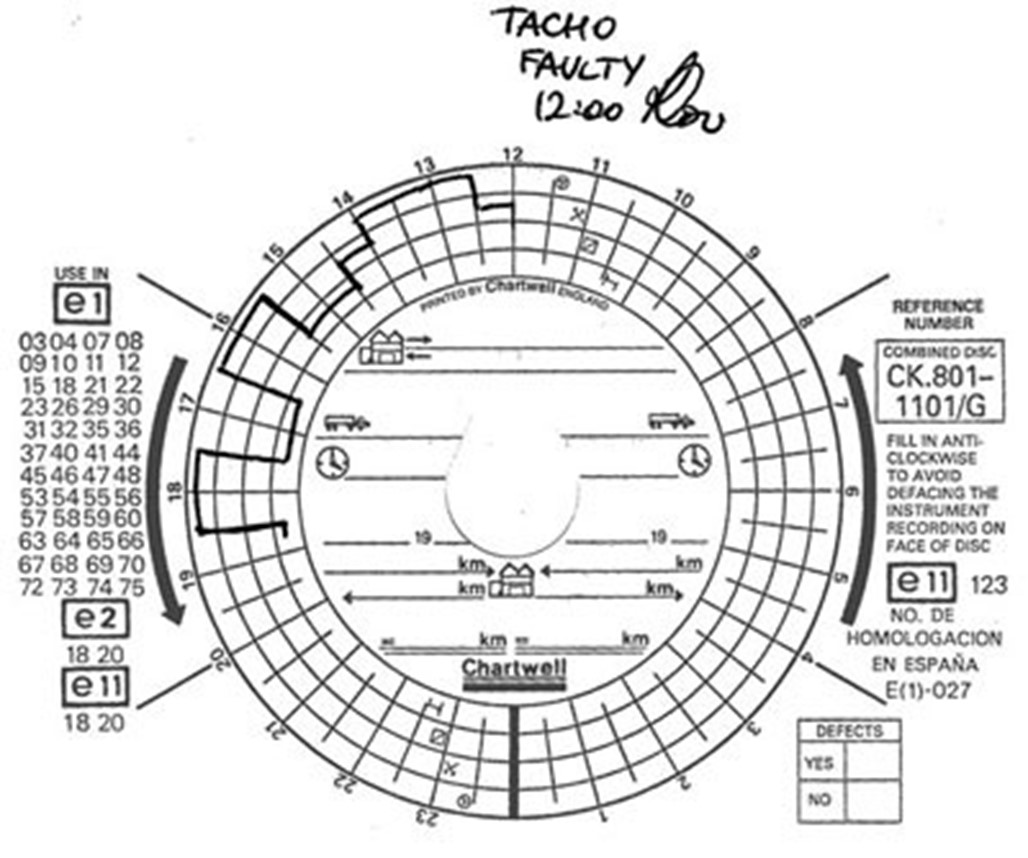Manual Tacho Record Entries
Drivers must produce a record of their whole daily working period. So when drivers are unable to operate the instrument, have not been allocated a vehicle, or are working away from the vehicle and have had to remove their tachograph chart, they must manually record their activities on the chart.
Manual entries may also be needed at other times - for example, if the tachograph develops a fault, or in the event of an emergency (‘unforeseen events'). Employers may also ask drivers to indicate on a chart where their duty (or rest) begins and ends so that they can ensure that a full record has been submitted.
Manual Records - Analogue
Most analogue charts have a specified place to make manual entries (usually on the reverse). However, manual entries can be made anywhere on the chart provided that they are clear and do not obliterate other recordings.
Manual entries may also be needed at other times – for example, if the tachograph develops a fault, or in the event of an emergency see ‘Unforeseen events’. Employers may also ask drivers to indicate on a chart where their duty (or rest) begins and ends so that they can ensure that a full record has been submitted.
The following are examples of manual records.

This is an example of manual entries made on the rear of a tachograph chart of a driver who started their day at 06.00 with an hour’s work doing other duties away from their vehicle. They also finished their day with an hour of other work away from their vehicle and has indicated both the end and the start of a daily rest period. Their activities while with the vehicle are recorded by the instrument on the other side of the chart once it has been inserted.

This is an example of the manual entries made by a driver who changed vehicles at 12.00 in London and continued their duties before finishing in Bristol. All the details of their activities and their name are listed on the other side of the chart.

This is an example of the manual entries that could have been made by a driver who discovered a tachograph fault at 12.00. They use the pre-printed matrix to indicate their activities for the remainder of their duty until 18.30. They have also noted the reason for them keeping a manual record. All other details are provided on the other side of the chart.
Manual Records - Digital
A digital tachograph offers the ability for a driver to enter activities carried out by them away from their vehicle. This is by means of the manual input facility offered by the instrument. There is however no requirement to make a manual record on a driver card where all the activity has already been captured on an analogue record sheet.
Analogue tachographs do not have a manual input facility so a manual record must be made on the reverse of the record sheet detailing the type of activity and the times started and finished. Further details are given in the section relating to analogue tachographs under the heading of ‘manual records’.
The only time a manual record or entry is legally required is when:
|
Reason |
Action |
|
The activity takes place away from the vehicle and is not possible to use the recording equipment. |
Manual record to be kept on the analogue record sheet, on printout paper or by manual input on a digital tachograph where possible. |
|
The equipment or card malfunctions. |
A manual record must be kept on an analogue record sheet or on printout paper. |
|
The rules are breached due to an unforeseen event. |
Record reasons on a printout or the reverse of a portion of the print roll, at the latest on arrival at a suitable stopping place. |
|
A record needs to be corrected because the incorrect mode has been recorded |
Amend record, including the reason, on a printout or the reverse of a portion of the print roll as soon as possible. |
Manual records must be kept and produced in the same way as any other record which has been produced using recording equipment.